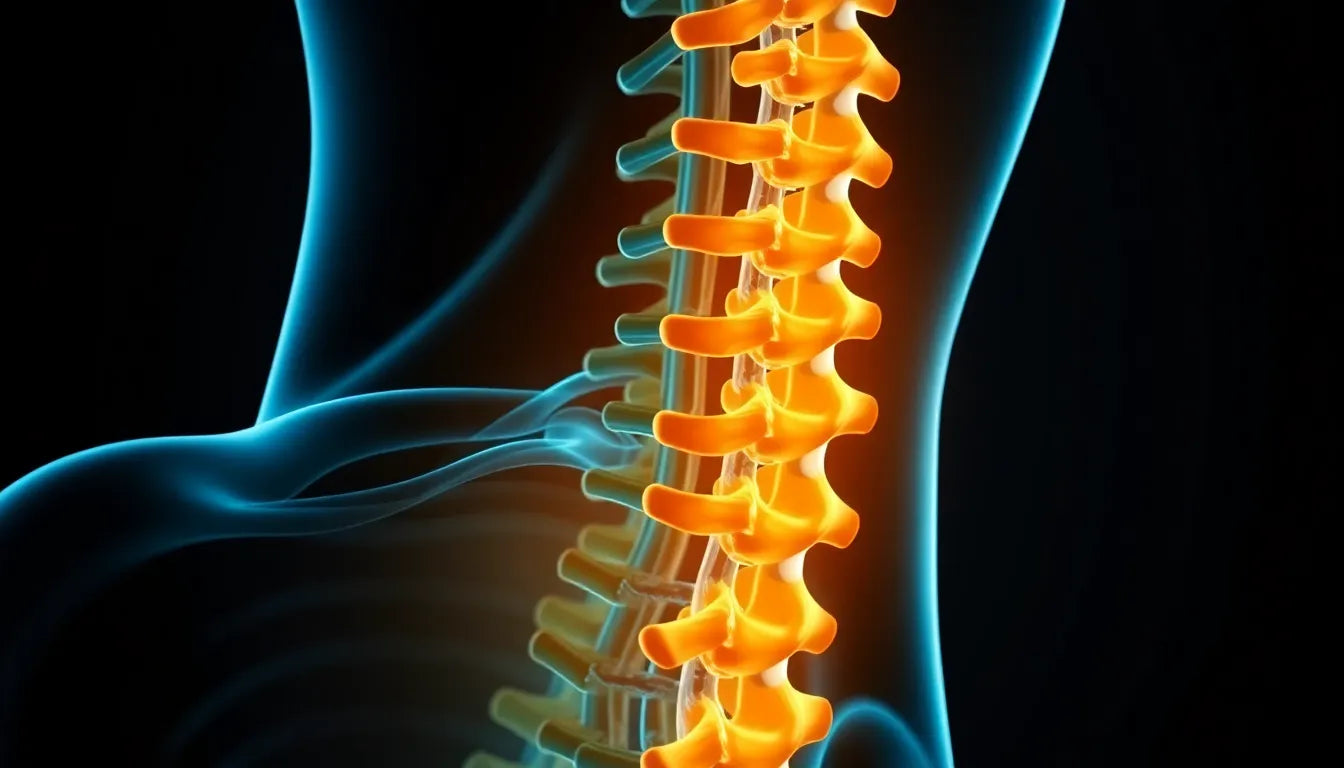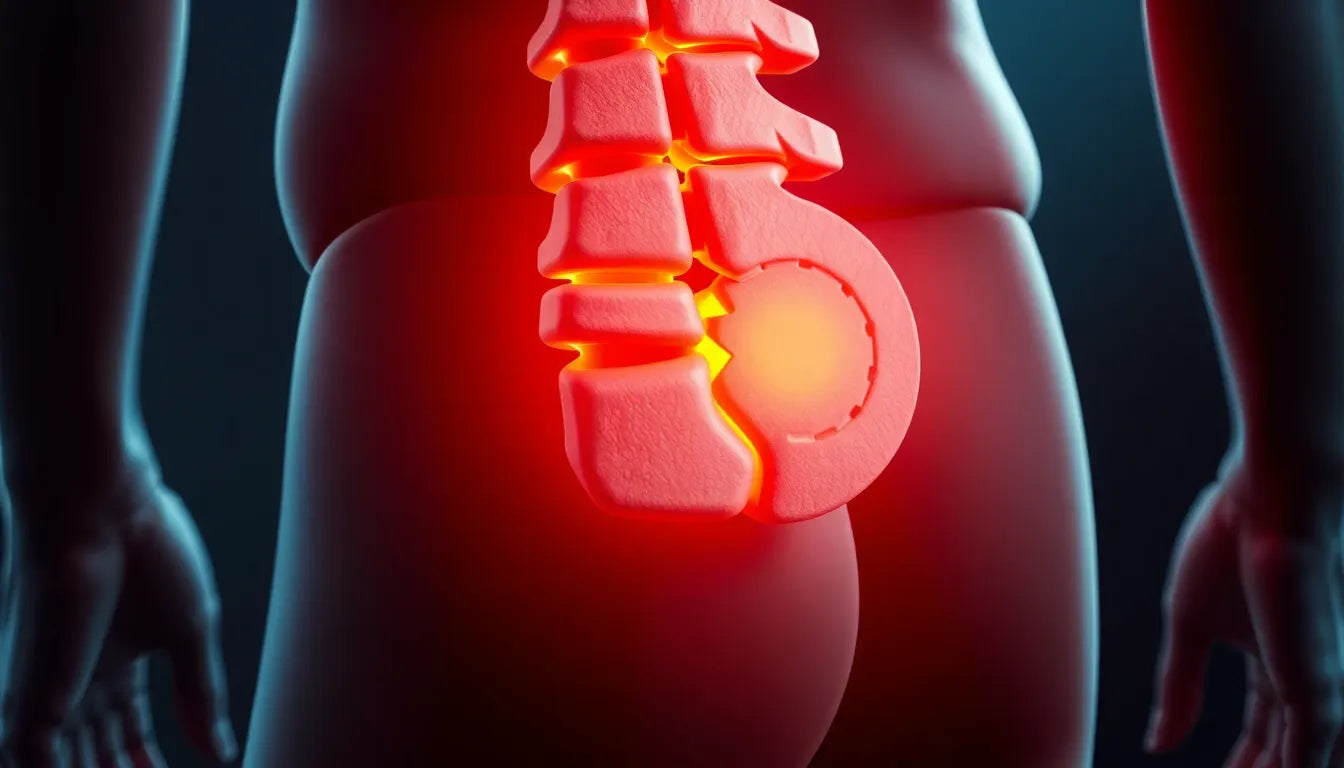Spondylosis is a term that frequently surfaces in discussions about spine health, particularly among older adults. It refers to the age-related degenerative changes that occur in the spine, impacting its structure and function. As we age, the spine undergoes natural wear and tear, leading to the deterioration of intervertebral discs and the formation of bone spurs, also known as osteophytes. These changes are most commonly seen in the cervical (neck), thoracic (mid-back), and lumbar (lower back) regions of the spine.
Understanding the prevalence of spondylosis
Spondylosis is not an uncommon condition; in fact, it is a prevalent issue among older adults. As life expectancy increases, more individuals find themselves dealing with the effects of these degenerative changes. While spondylosis can be asymptomatic for some, others may experience significant discomfort and a reduction in mobility, affecting their quality of life and daily activities. Recognizing the signs and symptoms of spondylosis is crucial for managing the condition effectively and maintaining an active lifestyle.
The significance of recognizing spondylosis changes
Understanding spondylosis changes is vital for several reasons. First, it allows individuals to take proactive steps in managing symptoms and preventing further degeneration. By identifying the early signs of spondylosis, such as back pain and stiffness, individuals can seek appropriate medical advice and implement lifestyle changes that may alleviate discomfort. Without proper management, spondylosis can lead to chronic pain, decreased mobility, and, in severe cases, nerve compression that results in radiating pain, numbness, or weakness.
Moreover, awareness of spondylosis can empower individuals to make informed decisions about their health. By understanding the potential consequences of unmanaged spondylosis, individuals can prioritize interventions that support spinal health, such as ergonomic aids, weight management, and regular exercise. These measures can significantly improve quality of life and reduce the progression of degenerative changes.
Is your back pain a message from your spine?
Have you ever wondered if your back pain is trying to tell you something about your spine's health? Spondylosis might be the underlying cause of that persistent discomfort. By paying attention to your body's signals and understanding the changes occurring within your spine, you can take charge of your health and implement strategies to manage symptoms effectively. Stay tuned as we delve deeper into the anatomical changes associated with spondylosis and explore practical ways to manage this common condition.
Degenerative changes in the spine explained
Spondylosis involves several anatomical changes that occur as the spine ages. One of the primary changes is intervertebral disc degeneration. These discs, which act as cushions between the vertebrae, lose height and hydration over time. This loss of elasticity and volume can lead to decreased shock absorption and increased pressure on the spine, contributing to discomfort and reduced flexibility.
Another significant change is the formation of bone spurs, or osteophytes, along the edges of the vertebrae. These bony projections develop as the body attempts to stabilize the spine in response to disc degeneration. While osteophytes can provide some structural support, they may also cause pain and limit movement if they press against nerves or other structures.
In more advanced cases, spondylosis can lead to spinal canal narrowing, known as spinal stenosis. This condition occurs when the spaces within the spine become constricted, potentially compressing the nerves and leading to symptoms such as pain, numbness, or weakness in the extremities.
Unpacking the causes and risk factors
While age is the most significant factor contributing to spondylosis, several other risk factors can accelerate degenerative changes. Repetitive strain from certain occupations or activities that place continuous stress on the spine can exacerbate wear and tear. For instance, jobs that require heavy lifting or prolonged periods of sitting can increase the likelihood of developing spondylosis.
A sedentary lifestyle can also contribute to the progression of spondylosis. Lack of regular physical activity can weaken the muscles supporting the spine, leading to increased stress on the vertebral structures. Furthermore, genetics play a role, as individuals with a family history of spine issues may be more predisposed to developing spondylosis.
Obesity is another important risk factor, as excess weight can place additional pressure on the spine, accelerating the degeneration of discs and joints. Addressing these risk factors through lifestyle changes and preventive measures can help mitigate the impact of spondylosis.
Recognizing symptoms and their implications
Spondylosis can manifest through various symptoms, with pain and stiffness being the most common. These symptoms often occur in the affected region of the spine, whether it be the cervical, thoracic, or lumbar areas. The discomfort can range from mild to severe, impacting daily activities and overall quality of life.
Nerve compression symptoms are particularly concerning, as they can lead to more significant issues. Cervical or lumbar radiculopathy, for instance, occurs when nerves are compressed, resulting in radiating pain, numbness, or weakness along the nerve's path. In severe cases, myelopathy may develop, affecting coordination and balance due to spinal cord compression.
Understanding these symptoms is crucial for seeking timely medical intervention. Early diagnosis and management can prevent further complications and improve outcomes for individuals with spondylosis.
Visualizing the changes
To better understand the anatomical changes associated with spondylosis, consider an infographic that illustrates the spine's transformation. Such a visual aid can highlight the progression from healthy discs and vertebrae to those affected by degeneration, bone spur formation, and spinal stenosis. This representation can provide a clearer picture of how spondylosis impacts the spine and emphasize the importance of early detection and management.
By recognizing the signs and symptoms of spondylosis and understanding its underlying causes, individuals can take proactive steps to manage the condition and maintain spine health. In the next section, we will explore practical strategies for managing spondylosis and enhancing quality of life.
Managing spondylosis effectively
Managing spondylosis involves a multi-faceted approach that combines pain relief strategies, lifestyle modifications, and ergonomic interventions. For many individuals, non-surgical treatments can significantly alleviate symptoms and improve quality of life. Pain relief strategies such as heat and cold therapy can be effective in reducing inflammation and discomfort. Over-the-counter medications, including non-steroidal anti-inflammatory drugs (NSAIDs), are often recommended to manage pain and reduce swelling.
Lifestyle modifications play a crucial role in managing spondylosis. Regular exercise, tailored to an individual's capabilities, can strengthen the muscles supporting the spine and enhance flexibility. Weight management is equally important, as maintaining a healthy weight reduces the stress placed on the spine. Incorporating low-impact activities such as swimming or walking can be beneficial for maintaining mobility without exacerbating symptoms.
The role of ergonomics in spondylosis management
Ergonomic interventions are essential in managing spondylosis and preventing further degeneration. The use of ergonomic aids, such as supportive chairs and cushions, can significantly reduce strain on the spine during daily activities. These tools help maintain proper posture and alignment, minimizing the risk of exacerbating spondylosis symptoms. Integrating ergonomic solutions into daily routines, whether at home or in the workplace, can enhance comfort and functionality.
For those working in environments that require prolonged sitting or repetitive movements, ergonomic assessments can identify areas for improvement. Adjusting the height of desks, using supportive seating, and ensuring proper screen positioning can reduce unnecessary strain on the spine. These adjustments not only alleviate symptoms but also contribute to long-term spinal health.
Frequently asked questions
What are the changes seen in spondylosis?
Spondylosis involves several degenerative processes, including intervertebral disc degeneration, bone spur formation, and spinal canal narrowing. These changes can lead to decreased disc height and elasticity, resulting in reduced shock absorption and increased pressure on the spine.
Is spondylosis serious?
Spondylosis can range from mild to severe, depending on the extent of degeneration and nerve involvement. While it is a common age-related condition, untreated spondylosis can lead to chronic pain, reduced mobility, and complications such as nerve compression, which may require medical intervention.
What are the symptoms of spondylosis?
Common symptoms of spondylosis include pain, stiffness, and reduced flexibility in the affected area of the spine. Nerve compression symptoms, such as radiating pain, numbness, or weakness, may occur if the condition affects the cervical or lumbar regions.
How can spondylosis be prevented or managed?
Preventing or managing spondylosis involves a combination of lifestyle changes and ergonomic interventions. Regular exercise, weight management, and maintaining good posture are key strategies. The use of ergonomic aids, such as supportive chairs and cushions, can also help reduce strain on the spine and alleviate symptoms.
By understanding the nature of spondylosis and implementing these strategies, individuals can effectively manage their symptoms and maintain a high quality of life despite the challenges posed by this common spinal condition.
Sources
- Mayo Clinic. "Spondylosis: Symptoms and Causes."
- Hospital for Special Surgery (HSS). "Spondylosis Overview."
- Cleveland Clinic. "Spondylosis: Degenerative Spine Changes."
- Gleneagles Hospital. "Understanding Spondylosis and Its Causes."
- MedicineNet. "Spondylosis: Pathophysiology and Risk Factors."
- HealthPartners. "Spondylosis Treatment Strategies and Pain Relief."


















